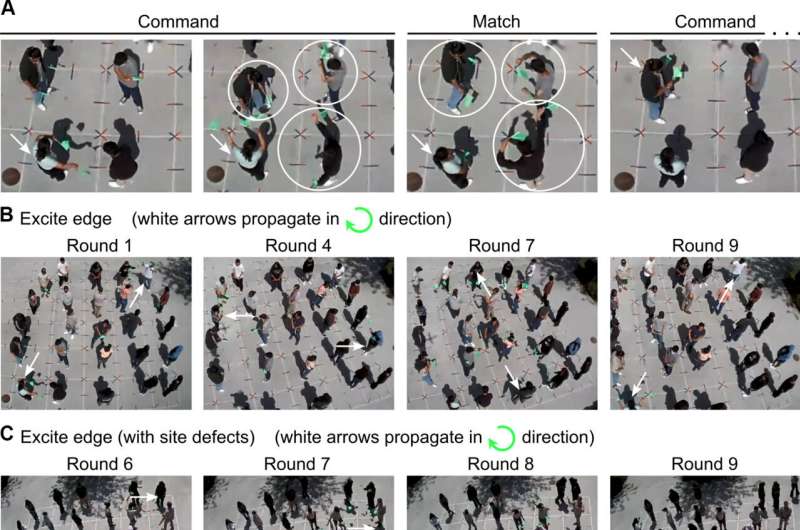
November 5, 2024 by Michelle Franklin, University of California – San Diego
Collected at: https://phys.org/news/2024-11-human-topological-insulator-choreographed-quantum.html
Science can be difficult to explain to the public. In fact, any subfield of science can be difficult to explain to another scientist who studies in a different area. Explaining a theoretical science concept to high school students requires a new way of thinking altogether.
This is precisely what researchers at the University of California San Diego did when they orchestrated a dance with high school students at Orange Glen High School in Escondido as a way to explain topological insulators.
The experiment, led by former graduate student Matthew Du and UC San Diego Associate Professor of Chemistry and Biochemistry Joel Yuen-Zhou, was published in Science Advances.
“I think the concept is simple,” stated Yuen-Zhou. “But the math is much harder. We wanted to show that these complex ideas in theoretical and experimental physics and chemistry are actually not as impossible to understand as you might initially think.”
Topological insulators are a relatively new type of quantum material that has insulating properties on the inside, but have conductive properties on the outside. To use a Southern California staple, if a topological insulator was a burrito, the filling would be insulating and the tortilla would be conducting.
Since topological insulators are able to withstand some disorder and deformation, they can be synthesized and used under conditions where imperfections can arise. For this reason, they hold promise in the areas of quantum computing and lasers, and in creating more efficient electronics.Play
To bring these quantum materials to life, the researchers made a dancefloor (topological insulator) by creating a grid with pieces of blue and red tape. Then to choreograph the dance, Du created a series of rules that governed how individual dancers moved.
These rules are based on what is known as a Hamiltonian in quantum mechanics. Electrons obey rules given by a Hamiltonian, which represents the total energy of a quantum system, including kinetic and potential energy. The Hamiltonian encodes the interactions of the electron in the potential energy of the material.
Each dancer (electron) had a pair of flags and was given a number that corresponded to a movement:
- 1 = wave flags with arms pointing up
- 0 = stand still
- -1 = wave flags with arms pointing down
Subsequent moves were based on what a neighboring dancer did and the color of the tape on the floor. A dancer would mimic a neighbor with blue tape, but do the opposite of a neighbor with red tape. Individual mistakes or dancers leaving the floor didn’t disrupt the overall dance, exhibiting the robustness of topological insulators.
https://www.youtube.com/embed/QBixTo3KOn8?color=whiteThis simulation shows the way an electron moves in a topological insulator according to a simple model.
In addition to topology, Yuen-Zhou’s lab also studies chemical processes and photonics, and it was in thinking of light waves that they realized the movement of a group of people also resembled a wave.
This gave Yuen-Zhou the idea of using dance to explain a complex topic like topological insulators. Implementing this idea seemed like a fun challenge to Du, who is currently a postdoctoral scholar at the University of Chicago and takes salsa lessons in his free time.
Du, who comes from a family of educators and is committed to scientific outreach, says the project gave him an appreciation for being able to distill science into its simplest elements.
“We wanted to demystify these concepts in a way that was unconventional and fun,” he stated. “Hopefully, the students were able to see that science can be made understandable and enjoyable by relating it to everyday life.”
More information: Matthew Du et al, Chiral edge waves in a dance-based human topological insulator, Science Advances (2024). DOI: 10.1126/sciadv.adh7810
Journal information: Science Advances

Leave a Reply